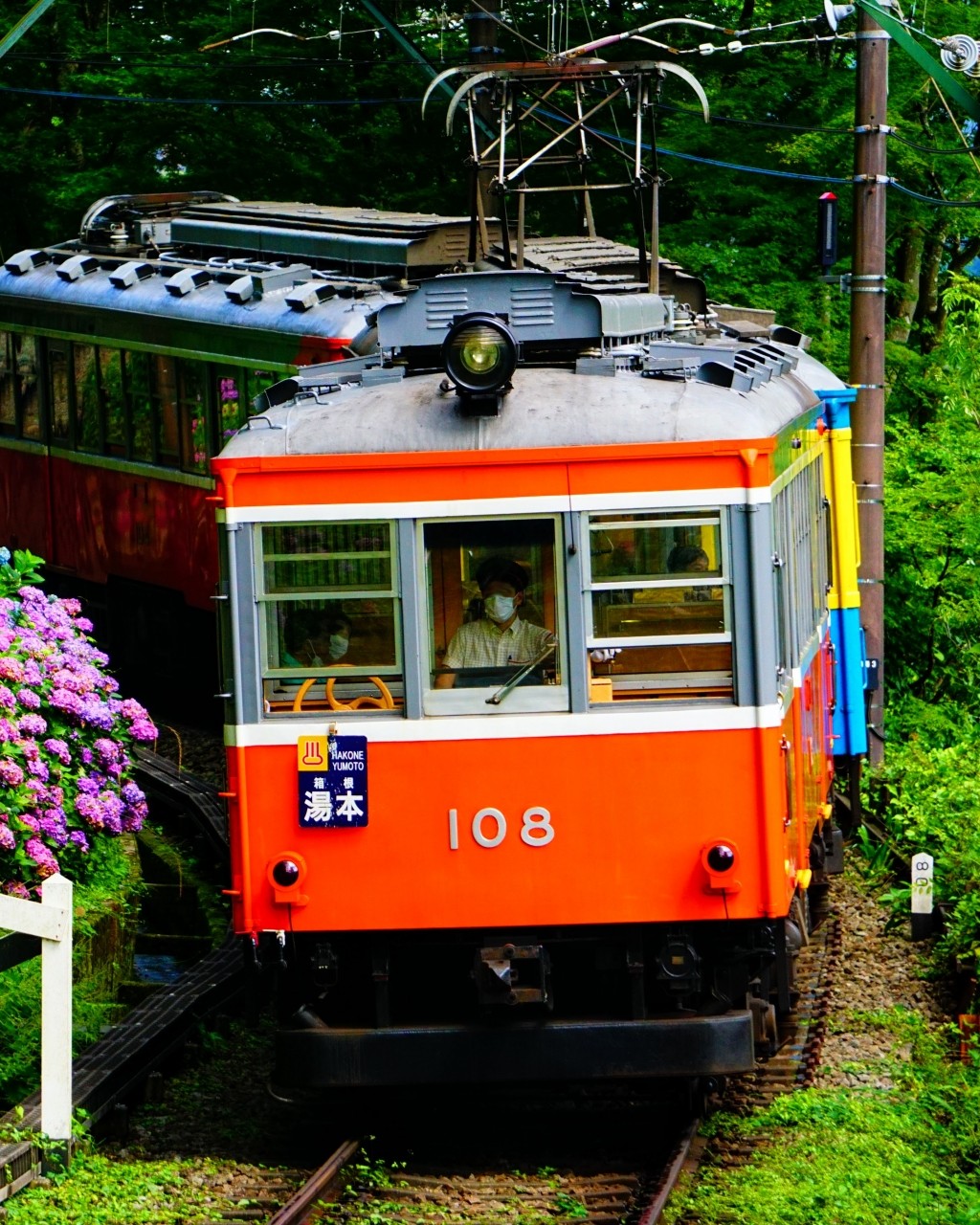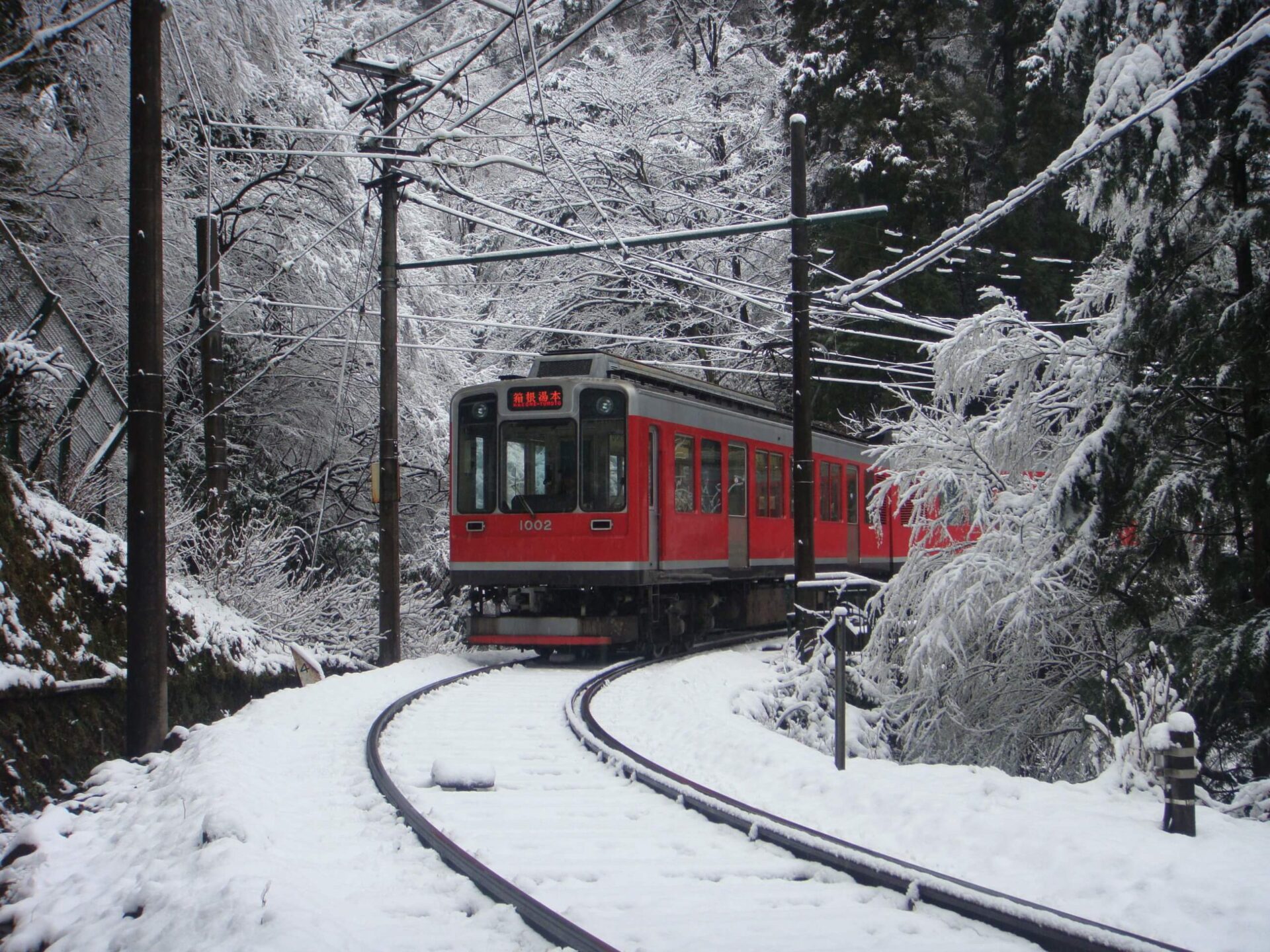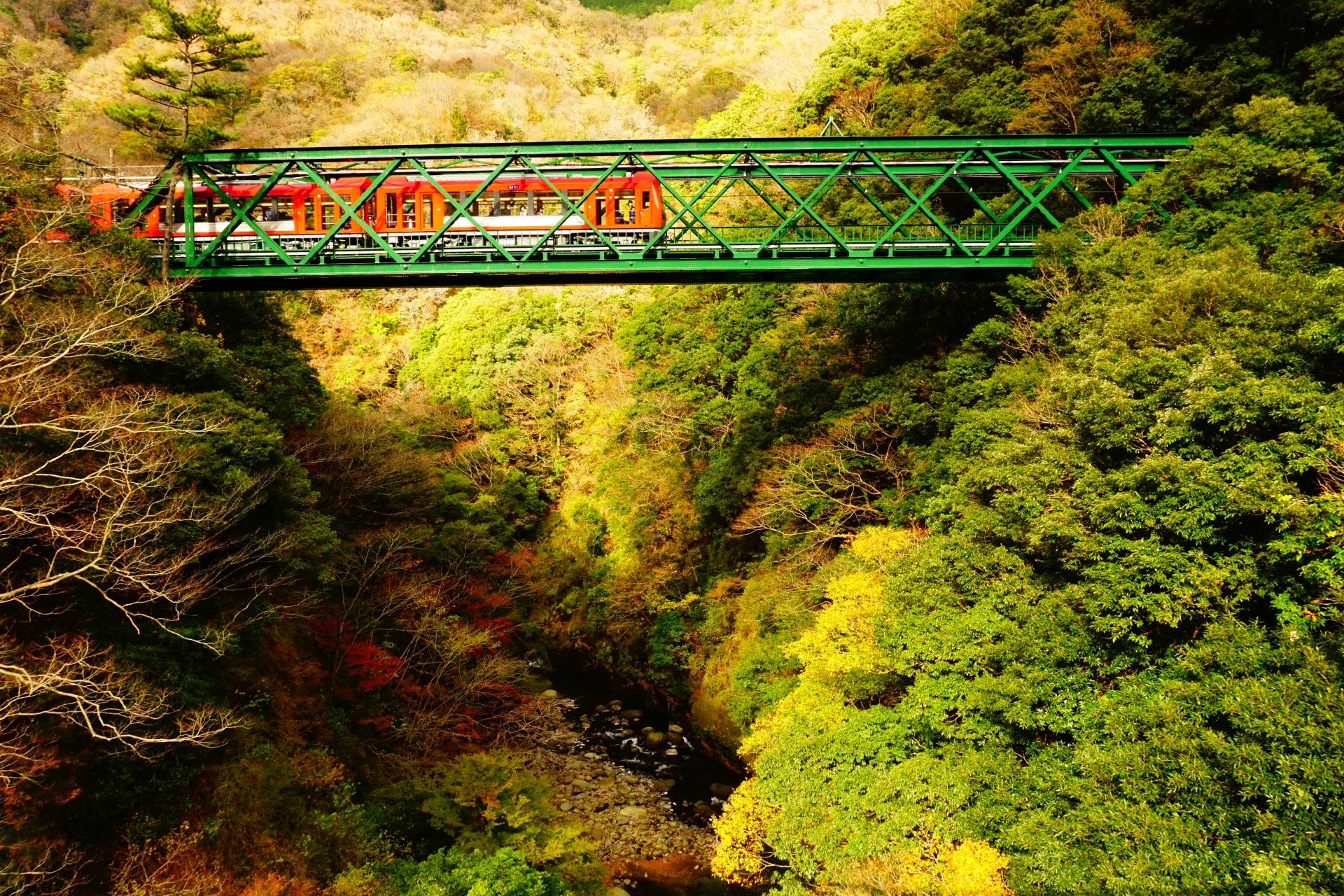-
- USA/Canada 1-800-285-2726
- Australia (02) 8006 4411

What is the Hakone Tozan Railway?
The Hakone Tozan Railway is Japan’s oldest mountain railway, originally opened in 1919, connecting Hakone-Yumoto Station to Gora Station. This iconic rail line offers more than just transportation — it provides a deeply scenic and historical experience through the heart of Hakone, one of Japan’s most beloved resort regions.
Travelers can ride through steep mountain slopes, deep valleys, lush forests, and quaint hot spring towns, making it an essential part of any Hakone itinerary. With a rich legacy spanning over 100 years, this narrow-gauge railway is a marvel of engineering and a true cultural gem.
A Mountain Railway with Switchbacks and Steep Grades
One of the most unique features of the Hakone Tozan Railway is its use of switchbacks — a rare railway technique in which the train changes direction multiple times to climb steep gradients. Between Hakone-Yumoto and Gora, the train ascends more than 450 meters in elevation, navigating 3 switchbacks to manage the sharp incline.
This makes the ride especially exciting, as the train literally moves backward and forward up the mountain. Along the way, passengers are treated to incredible panoramic views of the Hakone mountains, bridges, and tunnels — a perfect mix of nature and ingenuity.

During the rainy season in June and July, the Hakone Tozan Railway transforms into the famous
"Hydrangea Train". As the train winds through the forested hillsides, thousands of vibrant hydrangeas (ajisai) bloom along the tracks. This creates a truly magical experience, as flowers come so close to the windows you could almost touch them.
At night, select trains feature special illumination rides, where the flowers are gently lit, adding a romantic atmosphere. It’s one of Japan’s most picturesque seasonal train rides and draws thousands of visitors each summer.

Autumn is another spectacular season to ride the Hakone Tozan Railway. From late October through November, the hillsides are painted in shades of red, orange, and yellow, creating a colorful tunnel of fall foliage. The crisp mountain air and the slower pace of the train allow passengers to savor every turn and viewpoint. Many travelers plan visits during this season to combine the railway ride with local hot springs and traditional ryokan stays.

In the winter months, especially from December to February, the Hakone mountains are sometimes dusted with snow. The railway becomes a serene, peaceful route through a white-covered landscape, especially after snowfall. Snow-covered bridges, pine trees, and quiet towns give the ride a different kind of beauty — still, elegant, and deeply calming. For those seeking a quiet escape from city life, winter is an ideal time to enjoy this hidden gem.

Throughout the route, the Hakone Tozan Railway features several iconic bridges and tunnels, including the striking Deyama Bridge, which offers spectacular views down into the forested valley. The engineering behind this railway is a feat in itself — the combination of sharp curves, narrow tracks, and multiple switchbacks makes it a favorite among train enthusiasts. The journey is not just about the destination, but also the craftsmanship and effort that went into making this route possible.
Traditional Japanese decorative craft based on marquetry works. Popularized during the Edo Period
Japan’s first French style garden
Part of the Fuji-Hakone-Izu National Park and famous for Hot Springs
Beautiful Scenery of Mt. Fuji from a different perspective
Hidden in the dense forest, but are well advertised by its huge torii gates
First Open-Air Museum in Japan, Picasso Pavilion and Foot-Bath Hot-Spring
Antique and Modern Venetian Glass Museum
Former checkpoint restored in 2007 and now serves as a museum.